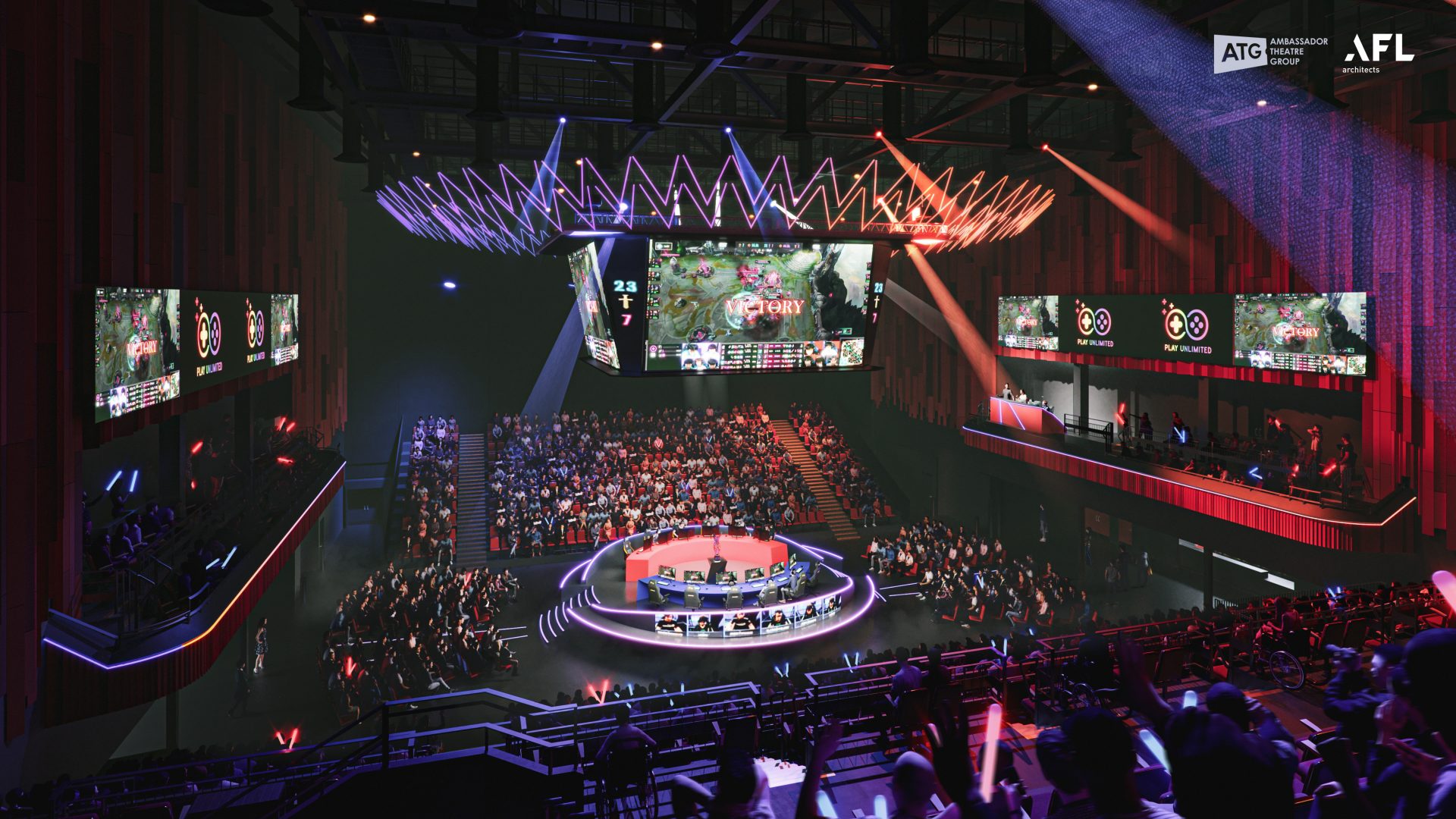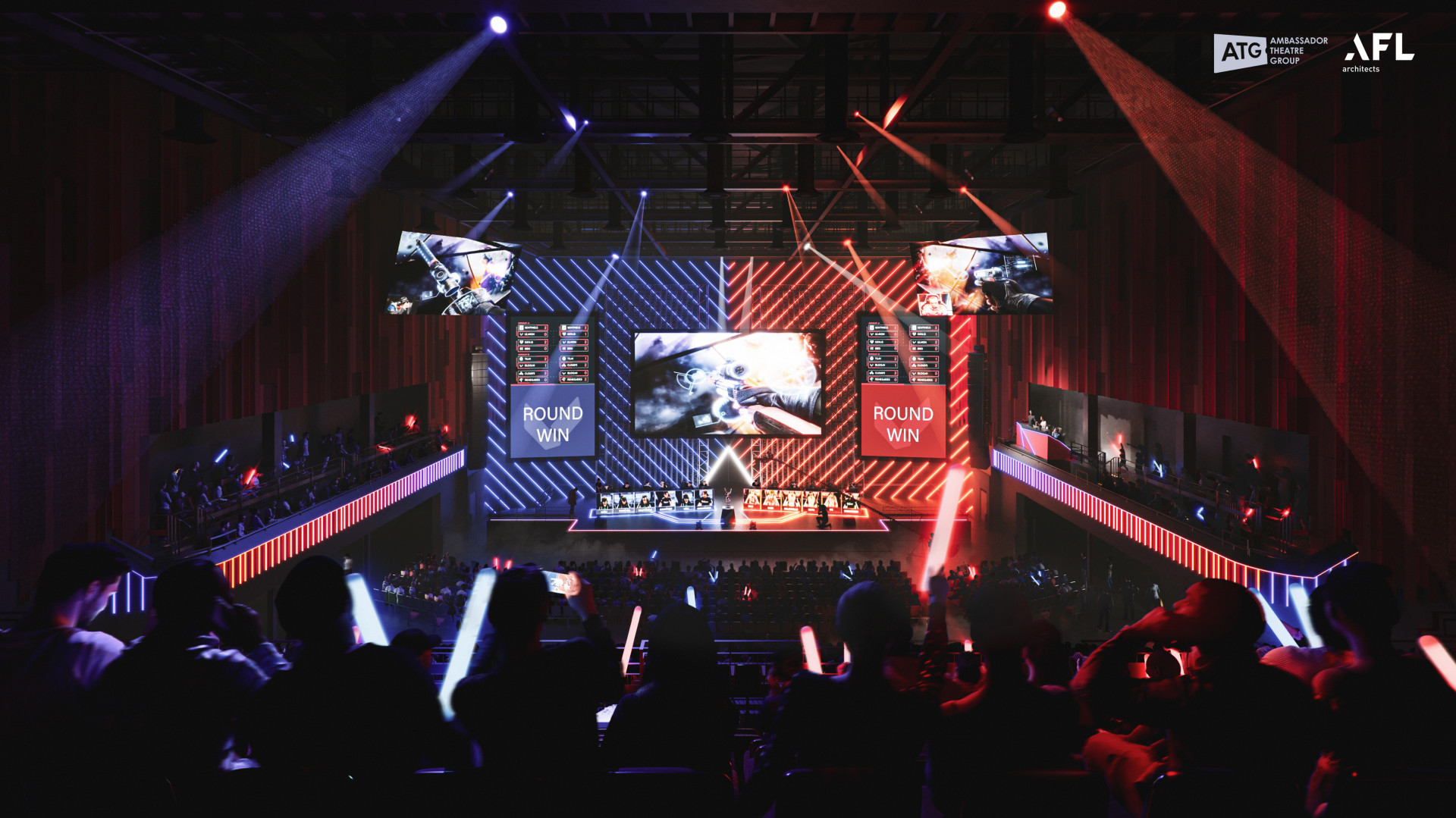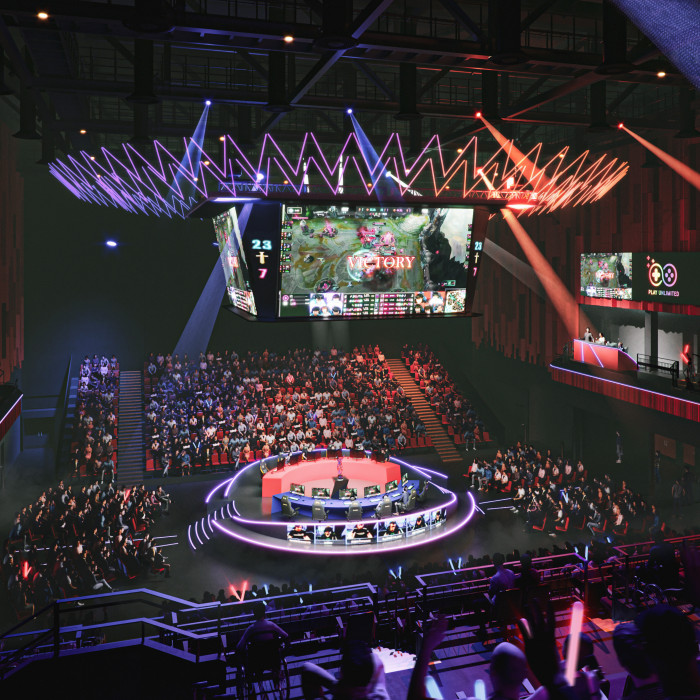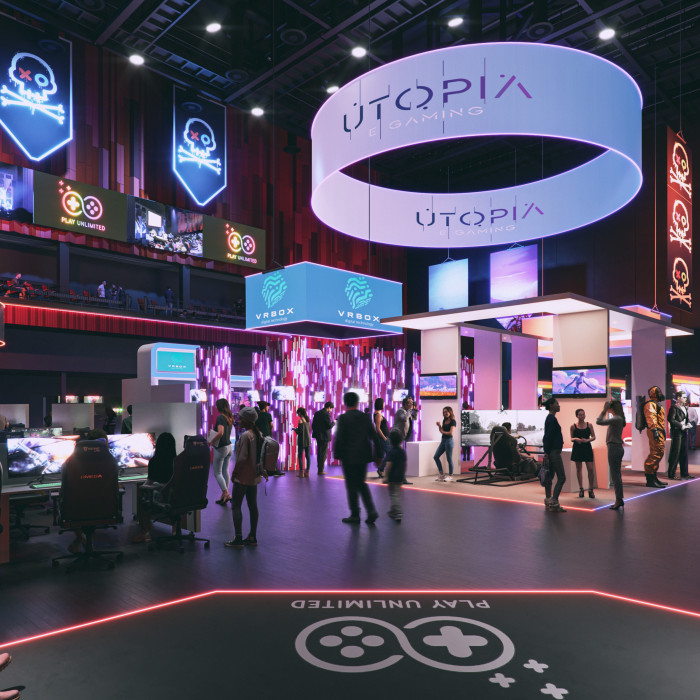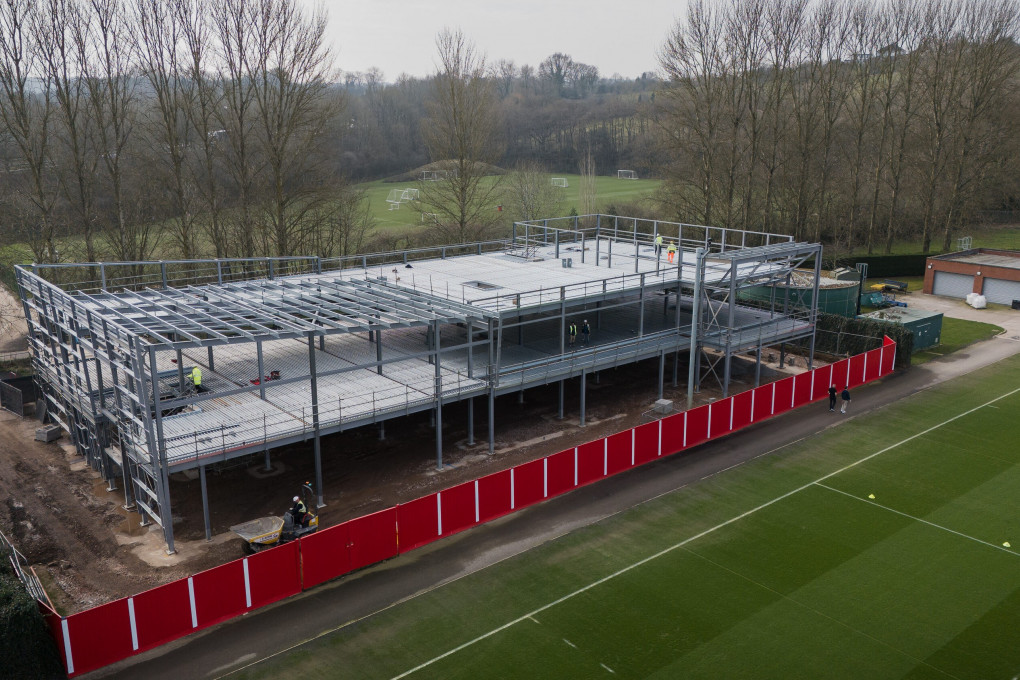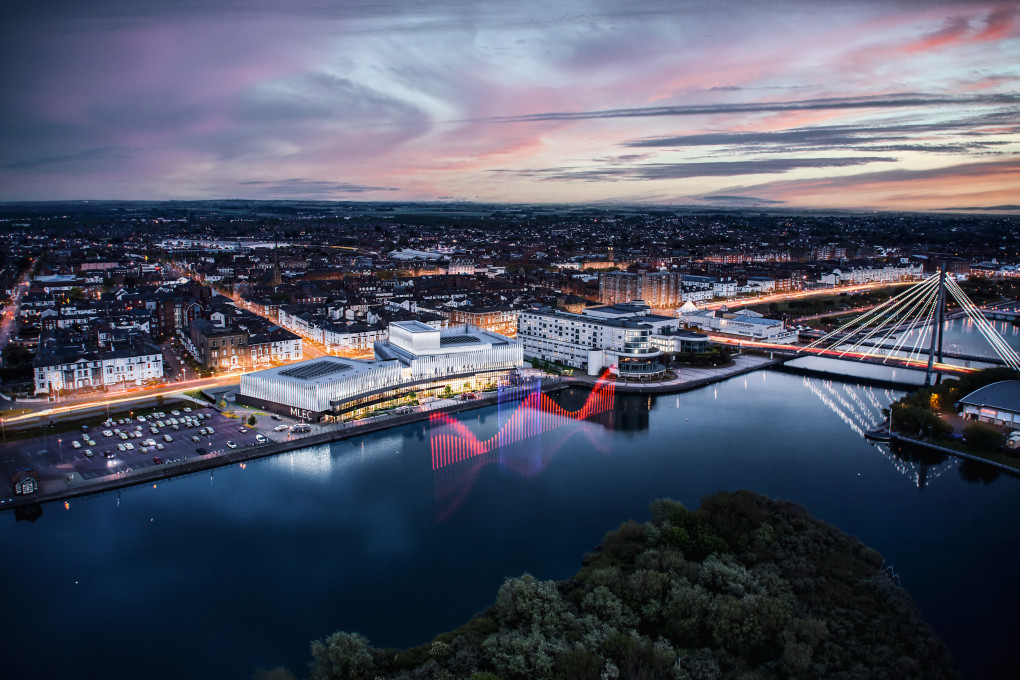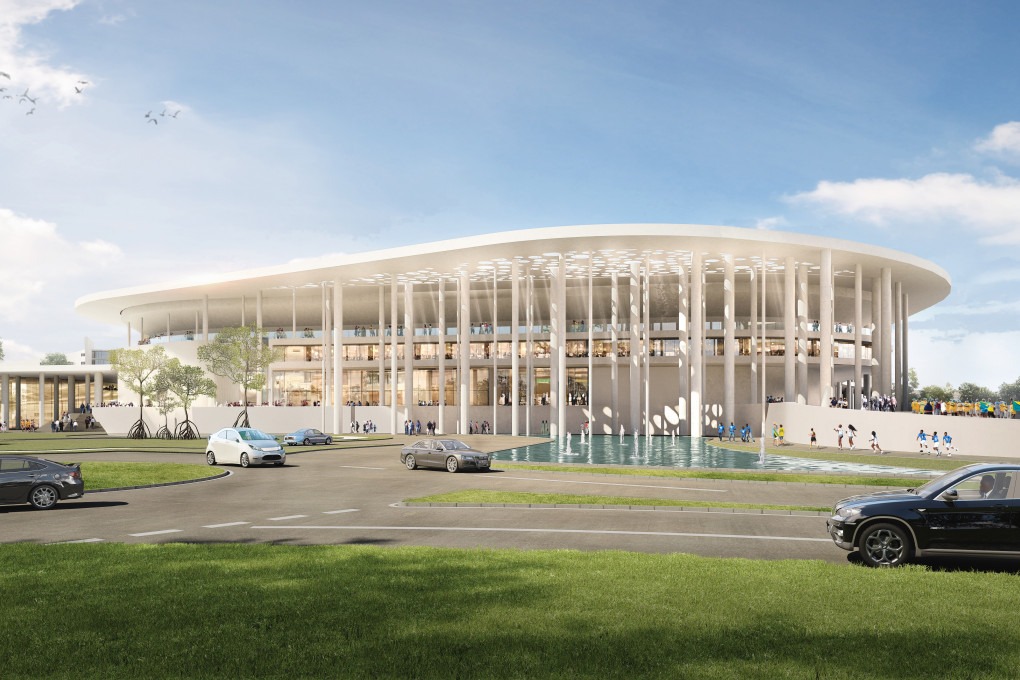Its success is driven by several factors; the wide variety of games that cater to virtually any interest, coupled with the accessibility of its content and the depth of strategy it offers. Its dynamic, evolving development driven by the relationship between game developers and the fanbase, fostering a sense of investment and community. Additionally, esports have a unique capacity for inclusivity, breaking down barriers related to geography, culture, age, gender, and disability. As a lifelong gamer who has followed and played a variety of esports, this development is hugely welcome from me. As an architect, I see our profession having a critical role in the continuing development of the sector.
Esports is growing at an incredible rate, with global revenue for the year 2024 projected to reach £3.4bn.
In the UK, esports revenue is projected to reach £180.9m in 2024, with a 5.88% annual growth rate (2024-2029), faster than countries like Japan, China and Germany [1].
Nearly all major esports titles are hosting events in the UK this year [2], a significant change from even two years ago. The International Olympic Committee (IOC) announcement that it will host the inaugural Olympic Esports Games in 2025 [3]. This is excellent news for integrating esports into the existing framework of sports and developing its credibility. However, the selection of games chosen points to a potential disconnect with the wider industry with major esports largely overlooked in favour of games which mirror the values of the IOC. The sector cannot rely on these developments to grow the industry, and it is critical to develop esports from the grassroots up to expand the player base and cultivate new ways to engage.
This informs the development of the type of spaces that host esports. By creating spaces which allow people to start their relationships with games in a social way and experience healthy competition, the community will grow organically. [4] This is demonstrated in countries such as South Korea and Japan which have a big focus on internet cafes and gaming spaces that create a social gaming experience. In the UK we have a growing number of board gaming cafes but spaces with proper gaming set ups are few and far between. The availability of these spaces would serve to offset the high cost of entry for buying a personal gaming PC. Several experts have also highlighted the advantages associated with holding more regular events (e.g., 500 - 5,000 spectators) in smaller, more flexible venues [5], as a model that will more successfully accommodate future trends, technologies and audience requirements in what is already a rapidly evolving sector.
Esports Venue Design
Esports offers a unique opportunity to create iconic, futuristic venues that are welcoming and accessible. Flexibility and sustainability are also major considerations to ensure their longevity.
Live esports events share a lot in common with traditional live sports events and entertainment shows. Both require a stage; both attract audiences that must be seated, entertained, fed, and supported effectively; and they must both provide effective broadcast and production facilities.
Along with our stadia experience, at AFL Architects we have a wealth of experience in arena projects having worked on developments such as the Swansea Arena, Connexin Live Arena and the soon to be constructed Southport Marine Lake Events Centre. Within all these projects flexibility has driven their development. Swansea Arena for example effectively serves as three different buildings for the price of one, enabling significant reductions in capital expenditure and carbon emissions due to its shared facilities and smaller footprint. Its flexibility facilitates esports configurations with front or centralised players stages being positioned extremely close to the public, inspiring an enthusiastic and interactive crowd.
Developing a venue that can support esports events requires a series of key design features:
Technical Infrastructure
There are minuscule margins of error when it comes to the IT infrastructure when delivering an event. High-speed, low-latency connections are essential for both seamless production and audience streaming. The use of large video screens requires reliable rigging and cabling systems. Additionally, the setup typically includes a dedicated stage or desk for presenters and commentators. The production team’s needs can be substantial, requiring several specialized spaces, such as team training and lounge areas, production studios, data centres, and event operations rooms, to ensure smooth event execution.
Flexibility
Venues have the potential to become year-round hubs for gaming culture, offering vibrant community spaces that double as gaming cafés or premium watch lounges with all-day activities. Flexible stage configurations are key to accommodate various gaming formats, from small one-versus-one formats such as in Real Time Strategy games, to team matches in First Person Shooters and Multiplayer Online Battle Arenas, to large-scale Battle Royale competitions. Additionally, esports events often include conventions and exhibitions, necessitating auditoriums and dedicated areas for showcasing new technologies, games, and updates. Many venues also feature game developer labs, fostering collaboration and feedback between developers, gamers, and professional players and enhancing the gaming ecosystem.
Player facilities
Players often compete for long hours, making ergonomic design a top priority. Gaming stations should include adjustable chairs, well-designed desks, and adequate lighting to minimize strain and enhance comfort. It is critical to ensure that any screens are positioned or configured in a way that prevents teams from viewing their opponents’ gameplay. Effective cable management is also essential to maintain an organized and distraction-free environment.
Fan experience
Spectator sightlines are crucial in esports venue design, as fans mainly watch action on large screens displaying key stats. This reliance on screens allows innovative layouts, ensuring a seamless viewing experience even with limited stage views. Real-time stats, player profiles, and gamified tools enhance engagement, while mobile apps and interactive displays boost involvement. Events often span multiple days, requiring breakout zones for relaxation, socializing, and alternative activities, creating a well-rounded visitor experience.
Premium experiences at esports events differ significantly from those of traditional live sports. While alcohol consumption is generally lower, there is a higher demand for complementary experiences such as live music, game testing stations, private viewing lounges, and Meet & Greet zones where fans can interact with their favourite players. Integrating technologies like augmented reality (AR) and virtual reality (VR) can further elevate the fan experience by offering immersive elements. Easy access to public transport is vital for audiences that are generally young and do not own cars.
Sustainability
Esports generally has favourable sustainability credentials when compared to traditional physical sports. However, according to the BBC, the overall environmental impact of the digital world—including devices, servers, and infrastructure—accounts for 3.7% of global emissions so there is still considerable scope for mitigation. Within esports, key emissions stem from international player travel and the production of high-tech equipment. [6]
Construction is also a huge factor so when developing venues, we should always be seeking to keep the impact of venues low. Due to the inherent flexibility of esports events, there is huge potential to convert existing facilities such as cinemas or arenas to suite esports functions. Consider the circular economy of a proposal to maximise the reuse of existing materials and assets and enhance resource efficiency. Looking for opportunities for mixed use developments or collaborations with existing organisations can also hugely benefit the viability of a proposal and ensure the usage of the facility is maximised throughout the year. Incorporating renewable energy sources, alongside energy-efficient lighting and smart climate control systems, can significantly reduce carbon footprints. Additional measures like rainwater harvesting systems further contribute to environmental sustainability.
Sponsorship and Branding
Esports events rely on sponsor activation, requiring dedicated spaces and creative theming to engage audiences. Theming the venue to reflect popular game aesthetics or futuristic designs can enhancing engagement. Be creative with finding avenues for this. I recently watched a tournament for a game themed around medieval history which was hosted in a real castle. These kinds of choices can really add to the uniqueness and atmosphere of an event. Integrated branding in décor, signage, and concessions ensures a cohesive experience. With a lucrative market of tech-savvy consumers, these events attract significant interest and investment. Additionally, drawing tourists and supporting local businesses amplifies their economic impact.
Different stakeholders
Architects need to be building strong partnerships with key stakeholders to ensure the successful development of esports venues. Among these stakeholders, universities have emerged as particularly significant due to their role in fostering talent, offering infrastructure, and engaging student communities passionate about gaming. Additionally, collaboration with game publishers ensures their support for hosting major tournaments. Event organizers bring expertise in managing large-scale esports competitions, while technology providers offer the cutting-edge tools and systems necessary for seamless operations.
Conclusion
Throughout the UK in the past few years, a huge variety of esports venues have emerged throughout the country. What once seemed like a distant dream is now a reality. Built environment professionals need to take steps to deliver a future for esports that works for players, fans, developers, venue operators, the environment and gaming as a whole. As an architect, and an esports fan, I am excited to be involved in achieving this.
References
1.Statista, Esports - Worldwide https://www.statista.com/outlook/amo/esports/worldwide
2. Ivan Šimić, What can be done to grow the UK’s esports scene? https://esportsinsider.com/2024/04/what-can-be-done-to-grow-uk-esports
3. Andrew Rogers, Olympic esports will level the playing field, says boss https://www.bbc.co.uk/news/articles/cm52d2n5er5o
4. Sports Venue Technology, Esports Arenas: The Rise of Dedicated Gaming Venues https://www.sportsvenue-technology.com/articles/esports-arenas-the-rise-of-dedicated-gaming-venues
5. CSIGHT, Esports Venues, From The Background Into The Limelight, Status Quo & Outlook On A Strategic Growth Area Report
6. Patrick Walker, Is ‘going green’ the future of esports? https://esportsinsider.com/2022/08/is-going-green-esports-future
